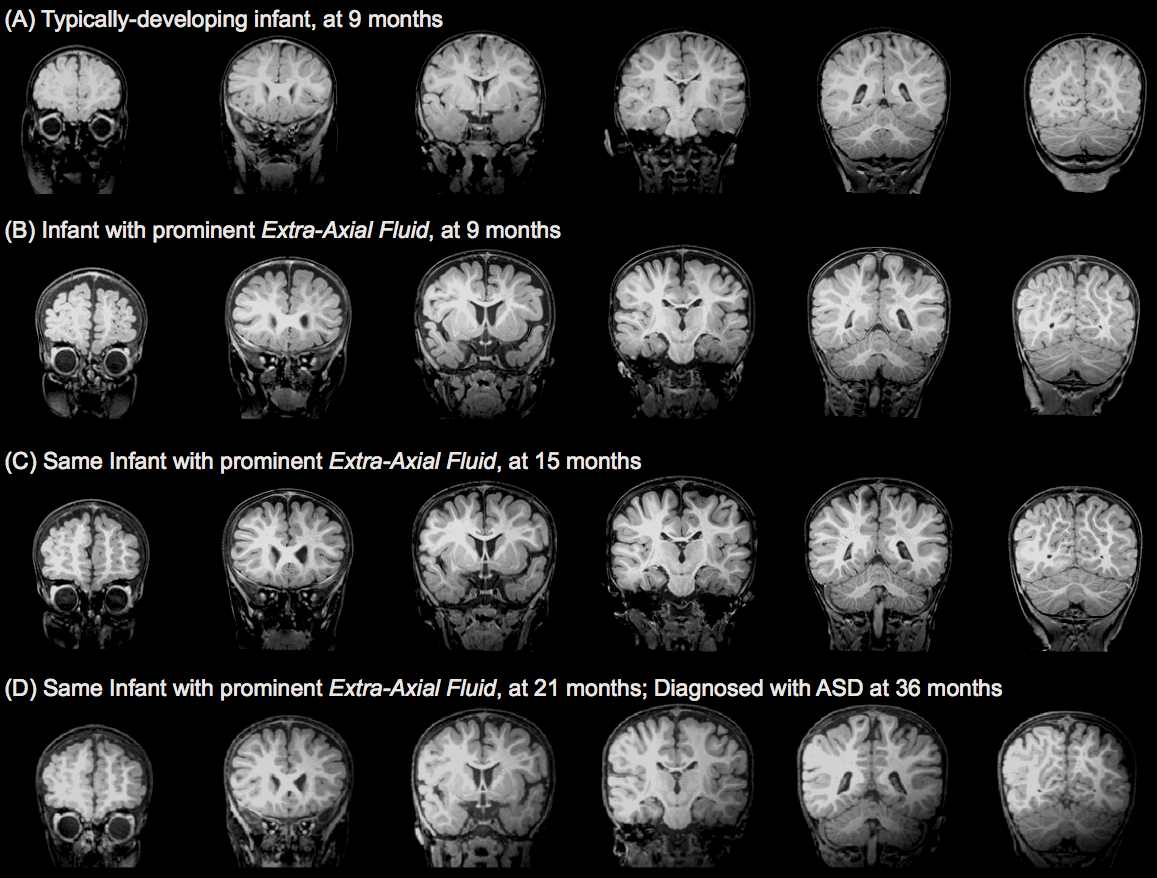MRI scanning could aid in the diagnosis of autism in young infants, a US research group have found.
For some time scientists have known that the heads of autistic children grow more rapidly in size after birth than the heads of non-autistic individuals. But the reason for this change was unknown.
Now, writing in the journal Brain, researchers at the University of California, Davis, have shown that most of this curious increase in head volume is due to the presence of unusually large amounts of cerebrospinal fluid - the fluid which surrounds the brain and spinal cord - between the brain and the skull.
Davis, have shown that most of this curious increase in head volume is due to the presence of unusually large amounts of cerebrospinal fluid - the fluid which surrounds the brain and spinal cord - between the brain and the skull.
The study followed 55 infants between the ages of 6 months and 3 years. During this time, each of them underwent three MRI scans. Each child also regularly took the standard clinical tests for autism.
Ten of the children went on to be diagnosed with autism.
All infants have higher volumes of fluid surrounding the brain than adults, but this fluid usually begins to decrease from around 7 months and naturally falls to adult levels by 2 years.
But, the autistic infants, on the other hand, had a 33% greater volume of cerebrospinal fluid surrounding the brain at 12-15 months compared with their non-autistic counterparts. Levels of fluid also tended to remain high for up to three years, and children with higher levels of fluid which persisted for longer were generally shown to have increasingly severe autistic symptoms.
The group suggest that the excess fluid itself might play a role in the development of autism. "Cerebrospinal fluid is not just water, it's actually a system for carrying out toxic waste from the brain" explains Psychiatrist David Amaral, who led the study. "If that process is slowed down, you end up with cerebrospinal fluid that has a higher concentration of this toxic waste. It could be that having this extra cerebrospinal fluid above places that we know are important in autism may have a direct causal effect on the development of autism".
This is a relatively small study, but should these trends be replicated on a larger scale, MRI scanning has the potential be added to the list of tests used to diagnose autism in children. The hope is that by combining several techniques in this way, it will be possible to diagnose autism at an earlier age, when it might be possible to intervene more successfully and change the course of the diagnosis.










Comments
Add a comment